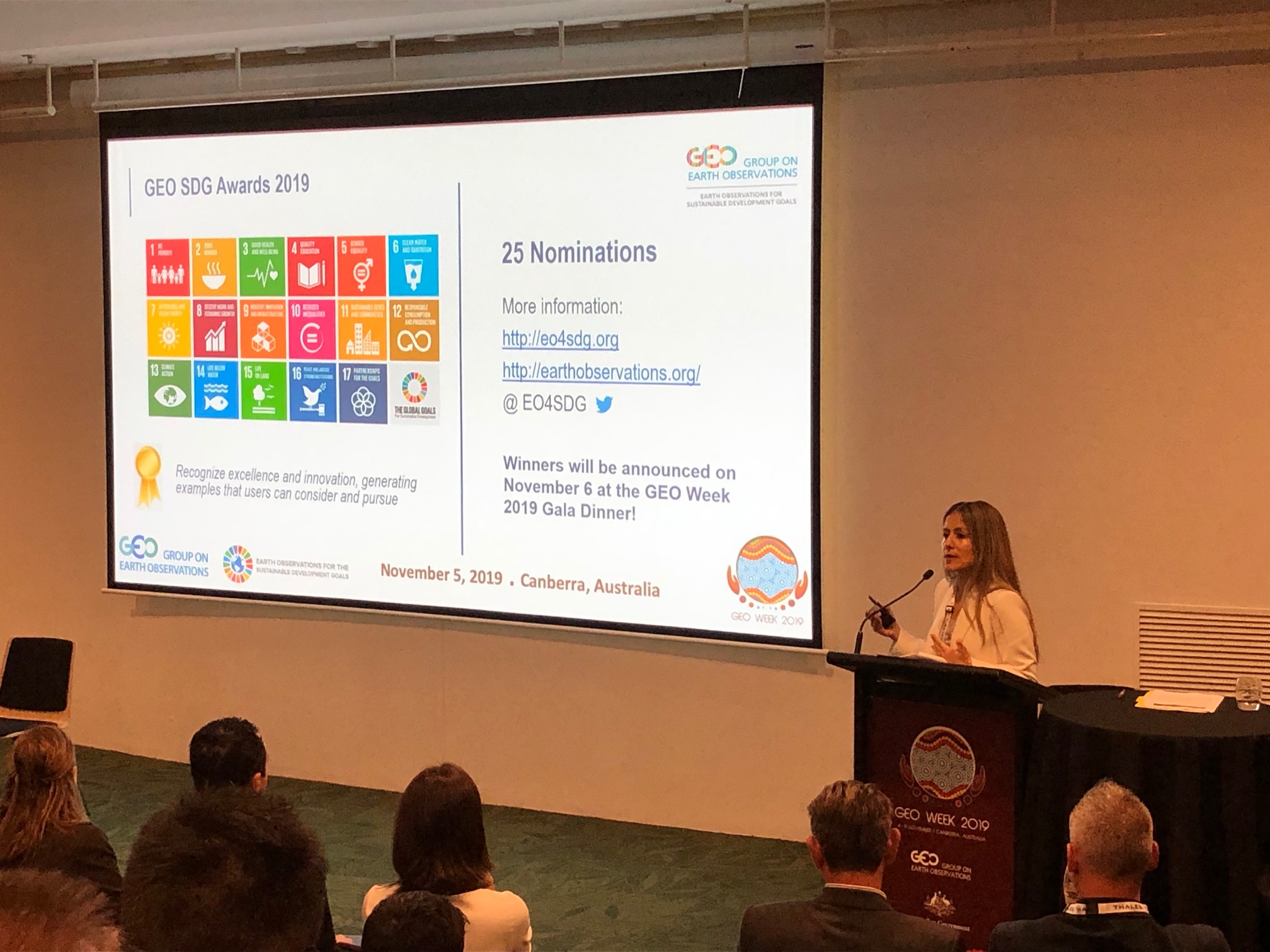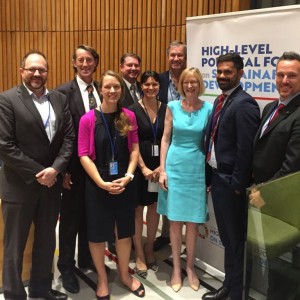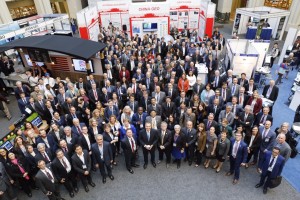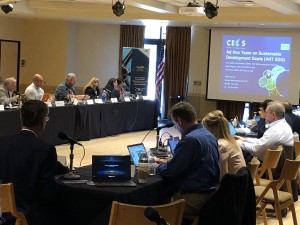SDG AHT Governing Documents
CEOS SDG AHT Future Options Synthesis Paper (March 2021)
CEOS SDG AHT sub-teams TOR_ (June 2020)
SDG AHT Data Supply Analysis and Strategy (June 2020)
Meetings & Events
2021 SIT Technical Workshop (virtual)
The SDG AHT organised a side-meeting to present the Federated approach (=new SDG coordination led by the SEO), hear more about the current sub-teams status and aspirations for next year, and decide on the mechanism to be presented at SIT TW. Based on this, the co-leads presented a brief summary of the sub-teams achievements, before leading a discussion on the proposed “Federated approach”. The SDG AHT will provide a clear plan (strategy implementation document) by the Plenary, so the CEOS Principals can approve this recommendation allowing CEOS to continue supporting the SDG process through a lighter mechanim, strategically led by the SIT Chair and implemented by the SEO.
SIT-36 (virtual)
As per the roadmap proposed at the Plenary, the SDG AHT presented their current work, and proposed a Future options paper for Principals to consider, detailing the “Full scale” and “Federated” approaches.
After discussions and further consultation, the Federated approach has been further explored and proposed at the SIT TW 2021.
CEOS 34th Plenary
The SDG AHT delivered a brief presentation outlining the SDG journey in CEOS, with a focus on 2020 activities including the creation of the 4 sub-teams, and proposed a transition Roadmap:
Then we invited the CEOS Principals to consider 2 options for our future, and CEOS Agencies expressed their support to extend the AHT for another year, following the transition plan of our SDG activities to internal (within CEOS) and/or external entities by Plenary 2021.
More information (such as sub-teams high-level reports) are available at the end of our presentation .
SIT Technical Workshop 2020
Similarly to the SIT-35 meeting (originally planned in Hobart six months ago), we just completed the SIT Technical Workshop 2020 (SIT TW), virtually again. Over the last few months, the SIT Chair team has been planning this online September gathering. The objective was to report on progress and advance the CEOS Work Plan including SDG activities, while providing the opportunity for all to discuss and raise any outstanding issues before the Plenary. The meeting was a success in many ways (~120 participants registered, attending one or several sessions over the two weeks, often with 80 online at one time), over a fortnight of 4-5h online sessions.
Like the 2 other SIT Chair themes, the SDG were highlighted with a dedicated session to take stock of progress in our goal to improve satellite data requirements analysis (and more) to support the UN Sustainable Development Goals. The SDG AHT reported on tangible progress of the 4 sub-teams, as well as updates of some algorithms development on the Open Data Cube and how CEOS has been planning to contribute to the GEO SDG Toolkits. Then a strategic discussion followed about our future, where the ad hoc team should be headed, and what kind of options the Principals should be invited to endorse at Plenary in a few weeks.
This time, we would have met in Zagreb (Croatia)… but the global pandemic has forced us to stay at home and connect with our colleagues from all over the world through our devices. While mastering our conference calls skills, we keep missing the genuine face-to-face relationships allowing more spontaneity and relaxed atmosphere.
On the SDG front, we were glad to present such achievements by the recently created sub-teams (recognised by Agencies) and to further discuss how CEOS should continue to handle this topic.
SIT-35 Virtual meeting, March 2020
Due to COVID-19 pandemic, the CEOS SIT-35 meeting was held virtually – decision taken just 2 weeks out instead of a well-planned meeting in Hobart, Tasmania. More information is available on this CSIRO blog post for our Centre for Earth Observation.
Like all CEOS groups, we had to convert our CEOS SDG AHT side-meeting into a visio-conference call on Tuesday morning, and we were pleased to welcome around 30 participants to join the discussions around the SDG requirements.
SIT Chair team accommodated a dedicated SDG session on Wednesday (Day 1) to allow discussions on the strategy of this cross-cutting activity, including two presentations, one strategic by Dr Alex Held (SIT Chair and SDG co-lead, CSIRO), and another one more on technical updates by Marc Paganini (ESA, SDG AHT co-lead).
The main outcomes or key points to take away:
- CEOS principals were invited to give their views on the current CEOS activities and priorities on SDGs and their links to GEO, to propose additional SDG focus for CEOS, and to provide information on their existing and future support to SDG-AHT including specific activities associated to each of the current and new priority SDGs.
- We further discussed CEOS/GEO roles on SDG using a chart designed with the team – version as of 25 March 2020
- We discussed a Data Supply Analysis & Strategy which has then been finalised (June 2020) based on comments and feedback received
- We worked on templates for the SDG satellite data requirements: documents used for discussions
- We proposed the creation of sub-teams focusing on each of the 3 primary indicators (6.6.1; 11.3.1 and 15.3.1), assuming the work on 14.1.1 will be done by the CEOS COAST Study Team with GEO Blue Planet), and asked CEOS Agencies to nominate individuals to co-lead and contribute to the 3 sub-teams. Sub-teams are now in place and will be described soon.
- We received comments from the Principals: broadly supportive acknowledging the work that has been done so far, including our improving collaboration with GEO, but also outlining the need to clarify the AHT’s lifetime issue and our future plan. The options definitely need to be further discussed over the next few months with a preferred option to be presented at SIT TW (September 2020).
- Two actions related to SDG were recorded (CEOS Agencies to consider norminations for sub teams, and the SDG AHT to provide an update of membership by SIT TW).
2019 GEO Plenary & Ministerial Summit (November, 2019):
This year the GEO Plenary was held in Canberra, Australia, followed by the Ministerial Summit (every four years). The SDG-AHT was involved in the organization of the key side event, “Delivering on the Sustainable Development Goals”. This side event was led by EO4SDG (GEO initiative on SDG) in collaboration with CEOS, GEOGLAM, GEO Blue Planet, Human Planet, GEO LDN and partners (a recording is available).

GEO week in Canberra
|

Dr Argyro Kavvada (EO4SDG) delivering opening remarks at the key side-event |
Devex published an article Can Earth Observation Data Be a Viable Alternative to Measure the SDGs? (by Lisa Cornish) on SDG highlights during the GEO Week 2019. Some SDG-AHT members had the opportunity to attend the GEO Plenary and especially to hear a dedicated Session on Sustainable Development to inspire our future work.
Finally, it is worth noting that several private companies attended the first-ever ‘Industry Track’ organized at GEO week, allowing the industry to interact directly with GEO members, with a strong focus on how to best deliver, accelerate, and help the SDG process by making EO data more accessible or easy to use. This was particularly the case at the Earth Observation 2.0 Workshop organized by CSIRO and EOA (Earth Observation Australia): big EO data platform providers (Google, ESRI, Maxar, Sinergise, as well as Satellite Applications Catapult and CSIRO (EASI) promoted their platforms, interacted with smaller groups, and showcased how they can directly support the SDG process as examples to support GEO work. The Open Data Cube and other platforms from the industry are definitely potential solutions to address SDG monitoring using satellite data.
|
Maxar Presenting |
Satellite Applications Catapult Presenting |
33rd CEOS Plenary (October, 2019)
At the last 33rd CEOS Plenary 2019, the SDG-AHT presented their status of activities & recommendations and was officially renewed for another and final year (whether it becomes a permanent working group or is dismantled).
 |
 |
| Dr Alex Held CSIRO presenting the team’s recommendations at the Plenary | |
The team has been working over the last few months (including side-meetings at SIT-34 in Miami and SIT TW in Fairbanks) to refine the scope of its activities and submitted a new CEOS Work Plan 2020-21 to the Principals, with a 2-year vision allowing us to prepare CEOS involvement in the SDG process post-2020.
This upcoming year should allow us to continue our engagement through GEO (EO4SDG) and focus on a few indicators (6.6.1, 11.3.1, and 15.3.1, to begin with) and key deliverables to help the SDG stakeholders with using satellite data.
In particular, the SDG-AHT aims to:
- Update the 2019-2021 CEOS Workplan on SDGs based on Principal decisions and comments at CEOS Plenary 33
- Coordinate Agencies’ participation and commitment to the SDG Workplan is adequate to fulfill our objectives
- Fully engage with CEOS Entities (VCs, WGs, and SEO) listed in the WP and plan a coordinated and effective way forward with designated sub-teams (if agreed)
- Comply with CEOS processes and work with CEOS SIT Chair towards SIT-35 (if a WG were to be created by CEOS Plenary 34)
Following the CEOS Plenary, the SDG AHT got ready for the GEO week in Canberra and the SDG related events.
High-Level Political Forum on Sustainable Development (July, 2018)

From L to R: Trevor Dhu (Digital Earth Australia), Adam Lewis (acting Chief Scientist at Geoscience Australia), Stephanie Auckens (DFAT), Chris Tinning (Chief Economist, DFAT), Julie Boulton (Assistant Director, Global Development Policy Section, DFAT), Darrell Wade (founder of Intrepid Travel), The Hon Gillian Bird, Duane Fraser (Indigenous community engagement specialist), and Neil Sims (CSIRO L&W).
The High Level Political Forum (HLPF) on Sustainable Development took place from 9 to 18 July 2018 in New York City at the United Nations Headquarters. The event included a 3-day Ministerial meeting with the central theme: Transformation towards sustainable and resilient societies.
The HLPF was also an opportunity to review progress towards the SDGs, with a particular focus on 5 goals:
- 6 – water sanitation
- 7- energy; 11-sustainable cities
- 12- sustainable consumption
- 15- life on land
- 17 – partnerships)
This year, Australia was one of several countries that gave the UN a Volunteer National Review Report, which included information on Digital Earth Australia and the Open Data Cube project that both use and promote the use of satellite data.
The Australian Government (DFAT, GA, CSIRO) took this opportunity to organize, together with other international partners such as GPSDD, GEO, space agencies and countries, a special side-event focused on Earth observations and SDGs. This event was structured around a panel discussion (including representatives from Australia, Switzerland, Canada, Greece and Namibia) moderated by Dr. Claire Melamed (Global Partnership for Sustainable Development Data) and Greg Scott (United Nations Statistics Division, Global Geospatial Information Management), who both shared their experiences and knowledge around “how Earth observation data will help them achieve the SDGs, the range of data and tools available, and opportunities to connect and collaborate to put the data to work.”
The panel discussion was then complemented by two hands-on workshops for practitioners, with inputs from CEOS Agencies representatives such as NASA, ESA, and CSIRO, as well as relevant UN Conventions and Bodies. The first workshop focused on “Financing Earth observation – building a business case to invest in EO”. This focus addresses a key challenge for Earth observation practitioners who have plans to deploy their tools at scale. Experts from CSIRO, NASA, UK Catapult, and countries such as Samoa attended the event.
The second workshop was about prioritizing Earth observations: “Getting started with Earth observation—identifying priority applications of Earth observation for your country”. This was another chance to hear in detail about the Earth observation needs and ambitions of attendees.
The HLPF as a whole provided a fantastic opportunity to promote the value of Earth observation in the SDG process. Australia’s VNR and various thematic side-events (e.g. Big space data and the SDGs) helped countries realize the remarkable potential of Earth observations and satellite data for monitoring and achieving specific targets, improving their national policies/frameworks, and enhancing their sustainability.
SIT-33 (April, 2018)
On April 23rd in Boulder, Colorado, USA at the University of Colorado, we organised a side-meeting just before the CEOS SIT-33 meeting, which was well attended by over 30 people from many CEOS Agencies.
We discussed our team’s latest achievements and activities with a focus on designing our future plans and presenting those plans to CEOS Principals (whether to continue as an AHT, prepare to become a formal CEOS Working Group, continue as the space arm of the EO4SDG initiative, etc.).
On April 25th, Alex Held (CSIRO) presented our latest key achievements since the Plenary, including our contributions to the recently published CEOS Earth Observation Handbook focused on the SDGs. He also presented possible paths forward for our team, the discussion of which will continue until the upcoming 2018 SIT Technical Workshop.
GEO Week 2017 Side Meeting: Earth Observations in Service of the 2030 Agenda for Sustainable Development
Our 4-hour side meeting at GEO Plenary, “Earth Observations in Service of the 2030 Agenda for Sustainable Development”, was held at the Reagan Building in Washington DC. We structured this meeting around concrete updates and discussions for four distinct panel sessions, each one focused on a single Sustainable Development Goal (Goals 6, 11, 14, and 15). CEOS prepared and led the panel discussion for Goal 15, Life on Land, gathering key speakers from countries, space agencies, UN Custodian Agencies, and National Statistics organisations that spoke mostly to SDG Targets/Indicators 15.1.1 (forest cover) and 15.3.1 (land degradation). More side meeting outcomes and details will soon be made available on the EO4SDG website. 
The 31st CEOS Plenary (October, 2017)
At the CEOS Plenary, CEOS Principals focus on making the key decisions needed to progress and direct priority CEOS initiatives, including those related to achieving the 2030 Agenda for Sustainable Development. In preparation for this, our Ad Hoc Team on Sustainable Development Goals (AHT SDG) hosted a pre-Plenary Side Meeting, during which we finalized our SDG AHT Implementation Plan and Plenary presentation.
SIT-32 (April, 2017)
About 20 people convened for the AHT-SDG Side Meeting at the 32nd Meeting of the CEOS Strategic Implementation Team (SIT-32). During this meeting, we presented on the complexity of the UN SDG process (who is doing what), discussed where we want to go as a group, and our next steps.
Ultimately, as we take stock of the UN processes in place for SDG implementation and of existing participants and stakeholders, we will focus our activities around the unique role that CEOS can play as a coordinating body for the space community’s efforts to support the integration of satellite Earth observation in support of the full realisation of the SDGs.
We will also align our engagement with the UN SDG Agenda in the context of GEO (GEO Programme Board, GEO Engagement Strategy, GEO’s EO4SDGs initiative) and build on established relationships that CEOS Agencies have with the SDG custodian agencies and individual countries. GEO (Barbara Ryan) provided a very informative presentation on the GEO approach to the SDGs. Take a look at our AHT-SDG SIT-32 presentation, as well as our new Terms of Reference, for more information.
AHT-SDG-1 (March, 2017)
The AHT-SDG team met in Washington DC from March 8-9, 2017 to plan the way forward for the main activities and strategic directions for the AHT-SDG. Learn more…
The 30th CEOS Plenary (October, 2016)
CEOS agreed to the establishment of this Ad Hoc Team to coordinate and drive CEOS activities in support of the UNSDGs, through GEO and other pathways. View meeting documents and materials from the 30th CEOS Plenary.
SIT-31 (April, 2016)
At the 31st Meeting of the CEOS Strategic Implementation Team (SIT-31), CEOS emphasized its role in supporting the UNSDG process:
Decision 3: The CEOS way forward on the UNSDGs will be undertaken in conjunction with GEO & the UN Initiative on Global Geospatial Information Management (UN-GGIM), supplemented by a top-down dialogue with relevant UN Agencies and with individual CEOS Agencies making connections within their governments.




